While I have gone over a lot of my findings on United Stopover and Routing Rules, I have never gone into the nerdy details of what is possibly driving United’s engines like this post.
In 2016 when they changed their program I spent a month testing stopover routes and tricks and discovered what I think are some interesting tricks that apply just as much today. I highly recommend reading The New United Stopover & Routing Rules and the new post Good News In United Stopover Rules.
However, this post will not only go over those tricks but also explain United’s pricing engine in more detail than you’ll see anywhere else on the internet. If you really want to understand the rules so you can come up with tricks that apply specifically to you… This is the post for you.
This is also trying to be as “complete” as possible, so it starts with all the basics… And then it goes 0 to 60 real quick. If you get lost, go back to the other posts above.
The Basics: United Rules 101
If you’ve read my other posts above on United stopovers, you can skip to the 201 section.
Earning United Miles
Chase cards are the keys to United miles.
Chase points transfer 1:1 to United miles, Marriott (which is also a Chase card) transfers 3:1 and there is a Chase United card.
I personally like to do all my spending with Chase cards, like the Chase Sapphire Preferred, solely for the transfer opportunity to United.
United Changes: Coming Soon!
United announced changing the way they price things for travel after Nov 15 – moving away from an award chart to Delta-like dynamic pricing. This is for United flights only- for the moment it luckily doesn’t affect partner / Star Alliance flights.
For more info read United Eliminating Award Chart.
Stopover Basic Rules
In my last post, I summarized the stopover rules as the following:
- Flight must end in the region of origin.
- The free flight must be in a different region than the region of origin.
- The free flight must be completely within a single region.
But there are other rules and concepts we need to go over first.
You can price as many flights as you can on one ticket.
Check out United’s Award prices here to understand pricing.
For example, let’s separately price out three different oneways: 1) US to Northern South America is 20k in economy, 2) it’s 20k from “Northern” South America to “Southern” South America, and 3) it’s 30k from Southern South America to the US.
Well, guess what, you could add all of these routes into United.com’s “Multi-City” search. And Guess what? It will price them out as a bunch of oneways.
The ticket would price out at 70,000 miles if all in economy:
Pretty simple.
In fact, you could add up to 6 routes on United.com, and it will just keep pricing out the same way.
And if you wanted to make one of the flights business class, or all of them, it would be priced out the same – individually as each flights based on the regions and class using their award chart.
As Many Open-Jaws As You’d Like
Also, the flights don’t have to be remotely as connected as the ticket above would be.
You could fly US to the Caribbean and continue on from South America. You can book whichever oneways you want.
Again, it’s just going to price out the individual flights. That’s the key!
Of course, it’s easier to book a ticket that leaves the same airport you fly into… But perhaps you’re going to take a cruise, a different flight, a train (although probably not over the Caribbean, like in this example). Point is, there are lots of practical reasons to “open-jaw”.
Adding “Free Flights” or Free Stopovers
Example of 1 “free flight”:
- LA to Hong Kong = 40,000 miles (in economy)
- Hong Kong to Singapore = 0 miles (in economy)
- Singapore to LA = 40,000 miles (in economy)
(The free flight above is in blue).
“Free Flight” is within a single region.
The key here is that the free flight is within one region because Hong Kong is considered part of “South Asia” on the award chart.
To figure out which countries are in the same region, you’ll need to see United’s region definitions here.
Example of 1 free flight and 3 open-jaws:
- Seattle to Hong Kong = 40,000 miles (in economy)
- Hanoi to Singapore = 0 miles (in economy)
- Bali to LA = 40,000 miles (in economy)
(The open-jaws are the gaps where you would have to find your own transit, like HKG to HAN, SIN to DPS, and starting in SEA and finishing in LAX would also be considered an “open-jaw”).
That entire flight above would be 80,000 miles in economy.
This is a ticket I would very plausibly book, as discount airliners have super cheap flights from Singapore to Bali (I’ve flown that route at least twice), and possibly from Hong Kong to Hanoi. This is a great way to see Southeast Asia, and the longest intra-SE Asia flight (HAN-SIN) is free.
Although, understand every airport is just an example. Any airport combination should be possible, and as long as your “free flight” is within one region it should price out free on United.com.
How To Book a United Stopover
Go to “Advanced search” on United.com (or here), so you can select “Multi-city”.
Then you can continue to add flight, up to 6 on one ticket.
Everything will price out per flight…
And if you follow the rules, you’ll get free flights like this:
Advanced United Miles: United Miles Stopover 201
How To Get Business Class To Price Out Free.
The key is that the “free flight” can be the class of the previous flight.
Not a previous flight, but the flight directly before.
Here’s what’s interesting, if you flew directly from the US to Lima or the Galapagos in business class it would be 35,000 miles. But for 17,500 you can take a short flight to Belize in economy, and then take a business class flight to Peru for 20,000 miles. Therefore adding an extra stop for only 2,500 miles more.
(Although the main point is to show an example of triggering a free flight in business class despite the first flight being in economy).
The route and pricing:
- Houston – Belize = 17,500 miles in economy
- Belize – Lima = 20,000 miles in business class
- Lima – Galapagos = 0 miles in business class
- Galapagos – Houston = 20,000 miles
Total = 57,500 miles
The first flight is a short Houston to Belize flight in economy, and then take a flight from Belize to Peru in Business class for only 20,000 miles. Because this paid flight was in business, the next flight (if eligible/intra-region) can now be in business class for free.
“Region of Origin”
As mentioned, to qualify for a free flight, you have to end in the same region you started in.
If the letters are representing regions, the following is eligible:
- A – B
- B – B (free flight)
- B – A
The most important part here is that the very first and the very last flights are the same, (the ones in bold).
Previously, you also had to “change regions” as a stipulation to receive a free flights. But as you can see in my example that’s no longer true. Now you could do the following:
- A – A
- B – B (free flights)
- A – A
In fact, now you could do the following:
- A – A
- B – B (free flights)
- C – C
- D – D
- E – E
- A – A
As long as the first and last cities (which are bolded in each example) are in the same region, your first intra-region flight will be the one eligible for the free flight.
This means that if you wanted to, you could take the example above, but add a cheap throwaway flight in the “region” of origin, for the sole purpose of triggering the “free flight”.
Since United now has a number of “dynamically” priced short domestic flights under 10,000 miles, you could find one for 5,000 miles and add it on to your ticket. The example I used recently was Newark to DC.
It could look like this:
- Houston – Belize = 17,500 miles in economy
- Belize – Lima = 20,000 miles in business class
- Lima – Galapagos = 0 miles in business class
- Newark – DC = 5,500 miles in economy
Total = 43,000 miles
Here’s where things start to go off the rails…
Your “Free Flight” can be up to the class of the previous paid flight.
The free flight has to be after a paid flight.
Basically, this means the free flight can’t be the very first flight.
Given that I’m the one articulating these “rules” and not United, I probably seem crazy (or crazy detail oriented) to word it as “succeeding a paid flight”, instead of just saying the first flight can’t be a free flight… But I really think that it reflects how they programmed it. I’ll explain why I think that later.
For now, just know that the first flight isn’t eligible to be a free flight.
Here’s an example:
- EWR – IAD = 6,000 miles in economy
- LIS – VCE = 25,000 miles in business class
- CPT – NBO = 0 miles in business class
- IAD – EWR = 6,000 miles in economy
Update: Earlier I banged my head against something and a reader helped me resolve it (thanks Luke)!
I couldn’t figure out why I couldn’t get a succeeding flight in business class for free, and Luke figured out that it was because it was a “mixed cabin” (where it was partially in economy and partially in business class). This made no sense to me since the paid category and price in miles was purely under the business class column… But that mixed ticket prevented me from getting the next flight for free in business class.
So turns out this is possible.
- US – Seoul = 35,000 miles in economy
- Seoul – Shanghai = 22,500 miles in business class
- Hong Kong – Bali = 0 miles in business class
- Bali – US = 40,000 miles in economy
Here’s what is cool about this!
If you were to pay miles for that Seoul to Shanghai flight (which is intra-North Asia) in business class for 22,500 miles (even though it’s eligible to be free), then you can take the Hong Kong to Bali flight for free in business (because it’s intra-South Asia), which would normally be 25,000 miles.
Maximizing The Free Business Flight
Let’s go back to that South America example, because it’s an example of a cheap business class ticket that changes regions.
Actually, this is a good time to explain another rule…
A Maximizing Example
Take the first part of an example we used earlier…
- Houston – Belize = 17,500 miles in economy
- Belize – Lima = 20,000 miles in business class
I think this is still a great route, and Belize to Lima for 20,000 miles is one of the best business class prices for changing regions (“Central America” to “Northern South America”).
Now, let’s combine it with the most valuable intra-region business class: Africa.
In theory, this ticket would be at a much later date. You’d fly to Lima next month, mostly in Business Class using the route above for 37,500 miles, which isn’t that bad (or it could be the Galapagos even). Then you fly home with AA miles, or a separate United ticket, or whatever.
Then at a much later date you can book this intra-Africa ticket for free. That Africa ticket will be nearly at the value of the rest of the ticket. Then throwaway the Newark – DC ticket if you don’t need it.
- Houston – Belize = 17,500 miles in economy
- Belize – Lima = 20,000 miles in business class
- Cape Town – Nairobi = 0 miles in business class
- Newark – DC = 5,500 miles in economy
Total = 43,000 miles
The examples I gave last week were on how to get a ticket in Africa for free, but that was economy. This is in business class. An intra-Africa business class ticket is worth 30,000 miles alone.
But like everything in this post, it’s about the principles. I’m trying to teach the concepts, so you can maximize your own free flight when you need it…
Position to connect two tickets
Honestly, it would be better and cheaper to take a Southwest flight or a Delta flight (as you can find super cheap Delta Miles flights to the Caribbean with the Delta Miles Calculator).
Take a flight on Southwest to Belize after you’ve taken a domestic flight:
- DC – Newark = 5,500 miles in economy
- Belize – Lima = 20,000 miles in business class
- Cape Town – Nairobi = 0 miles in business class
- Newark – DC = 5,500 miles in economy
Now you get a free flight in business class worth 30,000 miles, plus all the other flights, for only 31,000 miles.
The Principle: Find a cheap Business Class ticket, to set up a valuable free ticket!
Most any flight within Latin America and the Caribbean will be near 20,000 miles in business class (except crossing over to Southern South America immediately drives up the cost).
And again, I think my post on “The Good News With United Stopovers” does a great job of giving examples where you would want to tack on a cheap ticket in the US, and it may be better at explaining that concept.
This post is to get you to understand the pricing engine, and how to find a deal.
Why I’m Africa Crazy
While I am teaching concepts, I do think that example is of particularly high value.
Africa has many wonderful places, and flights ain’t cheap! I flew to Europe direct from Austin for under $200, and yet nearly any flight in Africa is expensive!
And look how large the singular “Central & Southern Africa” region is:
It’s even more amazing when you consider all the African island-countries that are considered part of the region: Reunion Island, São Tomé and Príncipe, Seychelles, Mauritius, Madagascar.
That’s insane! Have you seen pictures of Seychelles? Tell the Maldives to move over!
Either way, this is a concept for saving miles. This is one of the most expensive regions to get around in but also consider the following United miles prices:
- Intra-Central Asia = 35,000 miles in business class
- Intra-North Africa = 30,000 miles in business class
- Intra-Middle East = 30,000 miles in business class
Conclusion: Full List Of Advanced Rules
I have one other section, for those who want to continue to nerd out, but I think we’ve reached the length / number of words where we may not start to be on the other side of the understanding bell curve… So I’ll wrap up!
Full Rules & Summary
Some of these may be newish or I brushed over them quickly, so I want to write them all down now that they all have plenty of context.
This is basically everything I’ve figured out about United, and I may be wrong on some details, so if you see exceptions while on United.com, please let me know!
1) The free flight has to be within a single region.
My first thought was to go test an intra-region flight that would be forced to use an outside hub – like an intra-Oceania flight that would have to connect in New Zealand… But I found no exceptions or loopholes here.
2) The free flight can’t be your first flight (or possibly the correct wording is, it has to be after a “paid” (with miles) flight).
(More on this in a second…)
3) Your free flight can be up to the class of the flight directly beofore it.
This would be a good time to explain that I believe this applies to “saver levels”. If you’re not seeing free flights but you are seeing prices, it could be because your previous flight was a saver level (which is smart) and there are no “saver” flights showing.
4) To get a free flight, your very first and very last city on the reservation have to be in the same region.
It doesn’t matter what the flights are as long as the very first and last city match regions, the computer will give the first intra-region flight for free.
5) The free flight must be in a different region than the region of origin.
(Am I missing any other of my major concepts?)
Mystery Of Mysteries
There’s one anomaly I can not figure out, and I’d ask for your help, but I have a feeling there’s no answer and it’s just the bug (however, if you end up finding something, please let me know!).
Remember early on I mentioned that the rule is not written so the first flight is ineligible for a free flight (although it’s not eligible)? Instead, I said it’s the first intra-region flight after a paid flight…
I do think this is the way it’s coded for sure, and here’s why.
I tried doing 6 flights, all intra-region flights, with the only flights being in the same region as the first and the last, in order to meet the qualifications of a free flight. And a strange thing happened…
So it would look like this:
- A – A
- B – B
- C – C
- D – D
- E – E
- A – A
I chose for the “free flight” to be flight #2 (B – B), then I paid for the next flight (C – C) as expected… And that’s when I got the tease!
flight #4 (D – D) also showed “0 miles” on the calendar! The scrolling calendar of days above the search results shows the lowest result for that day, and it said “0 miles”. However, there was nothing in the search results actually zero miles.
It just kept teasing me! Continually, even if there were only 4 flights in the search results, all of them normal prices, and yes the calendar would still show zero miles.
This tells me that part of the computer is triggered, thinking I’m following the rules. After all, my first and last flights are the same, it’s within a single region, and a paid miles fare flight (#3, C – C in this case) preceeds it.
Part of the computer says “Yep, it meets the qualifications”, but I think it’s also saying “but, no, you already used your free flight.
I believe you only get one free flight per ticket. After all, I’ve tried every route combination I can think of since then with the false hope that I could keep stacking free tickets, but it doesn’t seem to be.
However, I write all this to share with you in case you might accidentally find an example proving me wrong. It would mean a lot to me, cuz I’ve been pounding my head against this for way too long. I felt I fully wrapped my head around everything and this little anomaly drove me nuts trying to find out why it was showing this but not pricing it. My thought after a zillion tests, is that it’s a bug.
Actually, if you find any example that breaks one of my “rules”, I want to hear about it! Comments and questions are welcome!
As always, thanks for reading!
(If you prefer video, I did a live video of United Stopover & Routing Rule on Facebook Live here).


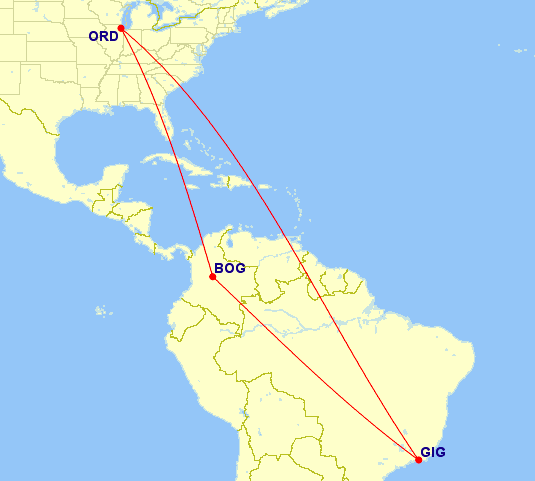
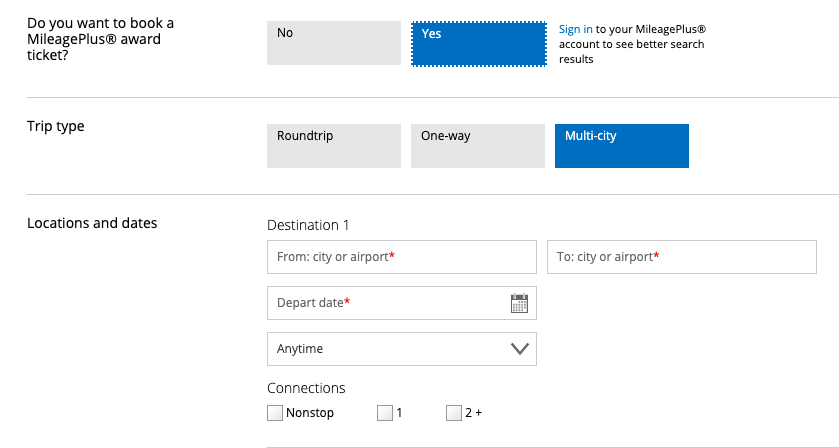
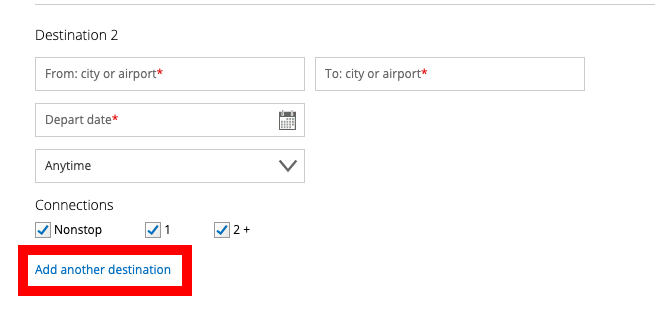
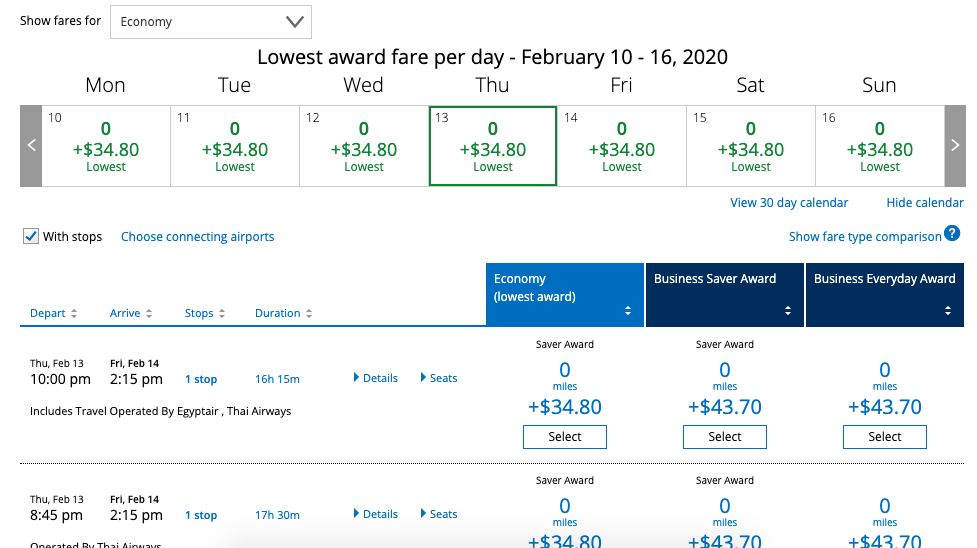
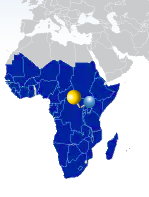
![The [Only] United MileagePlus Award Chart](https://travelisfree.com/wp-content/uploads/2019/04/United-MileagePlus-United-Airlines-Award-Chart-120x86.jpg)

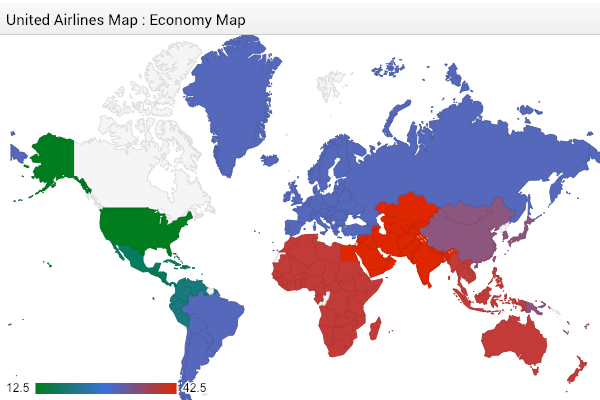

Hi Drew- Amazing (and dizzying!) post.
I tried
EWR-YHZ
YHZ-YUL
YUL-EWR
and the YHZ-YUL leg was still pricing for miles. did i do something wrong here? this was one of the basic hacks i thought. thanks AP
Mainland US, Canada and Alaska are in the same region. I think that is your problem.
Sandra is correct:
1) Remember the rules “The free segment must be in a different region than the region of origin.”
2) You can view list of regions here –> https://www.united.com/web/en-US/apps/mileageplus/awards/travel/listofregions.aspx
US (mainland), Alaska, & Canada are one region.
Hey Drew, are you booking the throwaway economy segment (Neward-DC) to reduce the price yet are you planning on actually boarding it? Can’t you get in trouble if you miss an award ticket segment?
Love the idea on finding the cheapest ticket to trigger the free segment, but it has not been clear if you book it just for the price or if it is implied you will actually board the flight. Tnx
I’ve personally never heard of anyone getting in trouble for it, and I threw away a ticket this month… Other than one guy on the news in trouble with Lufthansa (in Europe), which is clearly a throwout case. But ultimately, if you’re not comfortable, you can make it a domestic segment you need way later.
Before I was halfway intelligent I once called an airline when I was needing to end an award itinerary at an intermediate point due to a family gathering that was coincidentally scheduled near there for the date I was to be passing through. They told me they could reissue the ticket and charge me more, or I could just not show up for the flight.
I would not be confident that attitude prevails today. I would not do it a lot, and would also proactively check that award seats are generally available on that route. I think there’s an ethical issue in booking an award flight you don’t plan to take, given that in many cases very few seats are available and someone else may be blocked out by your action.
It’s great to see Drew back regularly recently with thoroughly researched and highly useful content. This blog has always been the best in quality, though there were certainly some dry spells in terms of frequency of posting.
The thoroughness of this is amazing! I’ve combined open jaws with the excursionist perk before, but had no idea about mixed classes within the award ticket allowing you to get the free leg in a higher class. Thanks for the detailed write up!!!
Great post (again). The quality of information on this blog is light years ahead of anything else out there
Thank you Drew. It’s extremely helpful to see all of the rules laid out by way of examples.
Ok…now I got the book one region r/t, get flight in another region to work correctly – or I think so…must wait until back home, as I don’t have my United login handy.
Had to clear my cookies – after reading TPG article – which notes this issue.
The TPG article also re-iterates the choose a large region.. Well..this requires one to think non sequentially…which may be difficult. The nesting of trips – or of course – just throwing away the last flight.
Also..unfortunately – finding first saver award domestic space is not going so well…
FYI – now with new dynamic pricing having a united credit card it reduces the prices of the award ticket quite bit instead of opening more saver seats as it used to previously. could be useful for positioning
I have to take a trip to Europe so I can fly ORD-ZUR in business class and back from GVA-ORD. Theoretically I can add a free ORD-SEA in the middle for free right? Because it’s all in the same region? But the problem seems to be that the return date has to be later than the middle flight. For it to really work I’d have to plan 3 separate trips to get the middle one for free?